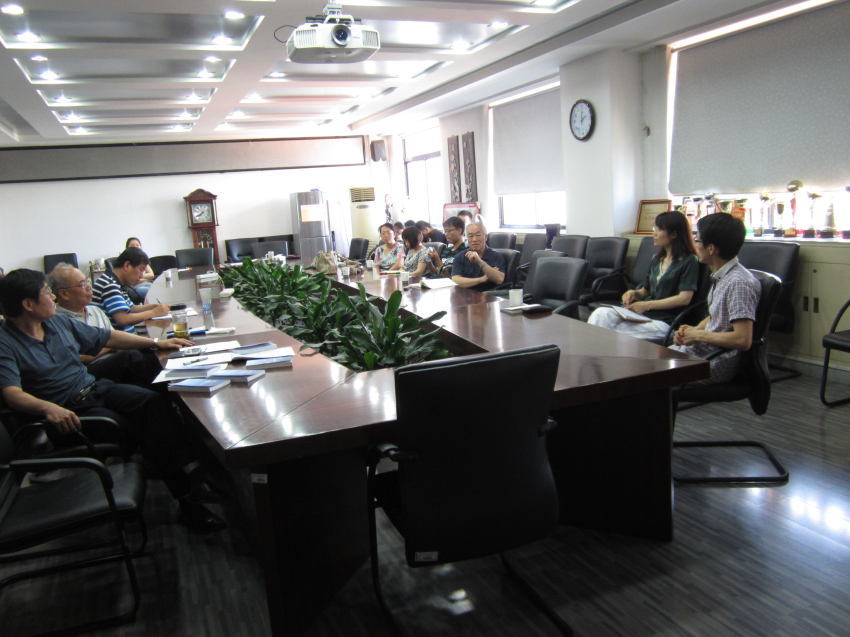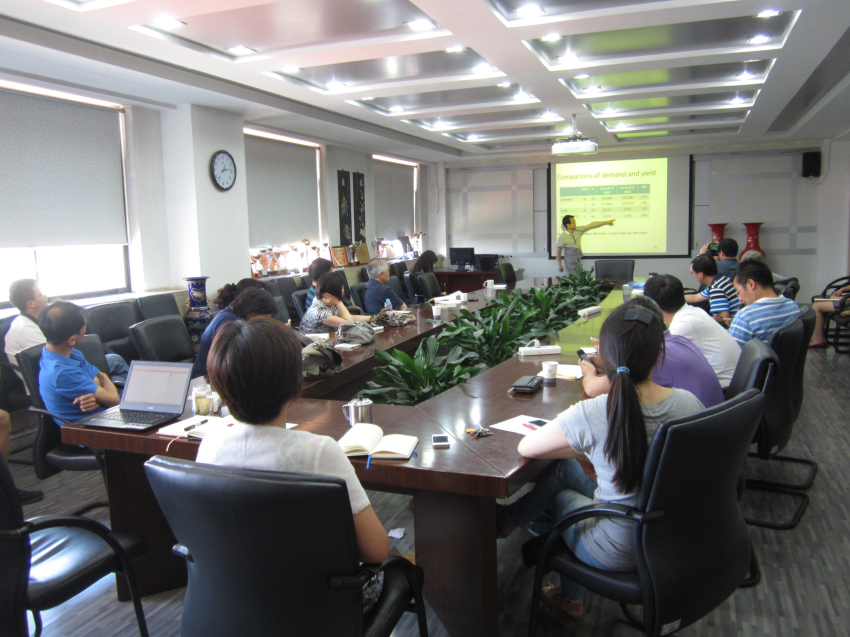

From 12:30 to 14:00 on June 18, 2015, invited by our school, Associate Prof. Yang Hangjun of Department of Transportation and Logistics of School of International Trade and Economics of University of International Business and Economics gave an academic lecture of pThe impact of high-speed rail on the Chinese airline industryq. The lecture was hosted by Associate Prof. Li Weidong. More than 20 teachers and students participated in the lecture, including Prof. Rong Chaohe, Prof. Zhao Jian, Prof. Lin Xiaoyan, Prof. Zhou Yaodong, Prof. Wu Jianhong and Prof. Tong Qiong.
In the lecture, Associate Prof. Yang Hangjun started analysis from development of Chinese airline industry in last 30 years and then went to the theme of impact of high-speed rail on the Chinese airline industry, focusing on impact of high-speed rail on the Chinese airline industry from the angle of empirical analysis. Based on airline plate data from Jan 1, 2010 to June 30, 2013 and using plate regression analysis model, he studied impact of high-speed rail on demands and benefit (ticket price) of Chinese traditional airlines. The empirical analysis results showed: (1) The opening of high-speed rail made both of aviation passenger volume and ticket price dropped obviously but the trend showed different characteristics in different air route. The more flow and longer distance, the more obvious of the dropping trend of passenger volume and ticket price, especially when the distance was longer than 1000 km, the price differentiation was more obvious after the opening of high-speed rail. However, the passenger volume differentiation was not obvious. (2) Whether the high-speed rail was opened or not, it obviously influenced demand price resilience of aviation market. Opening of high-speed rail made an increased demand price resilience of aviation. Therefore, on the air route with high-speed rail opened, lowering aviation price could made demand rise with bigger range and airlines could use reasonably lowered price to relieve shock brought by high-speed rail. (3) Running time length and operation times per day of high-speed rail as well as operating price differentiation between airline and high-speed rail had an obvious impact on passenger volume of airline. The bigger the differentiation was, the more the running times the high-speed rail had, the shorter the operating period was, the fewer the airline passenger volume was. The price differentiation was especially influential to airline passenger volume.
In the segment of exchange, Associate Prof. Yang Hangjun had warm communication and discussion with participant teachers and students.








